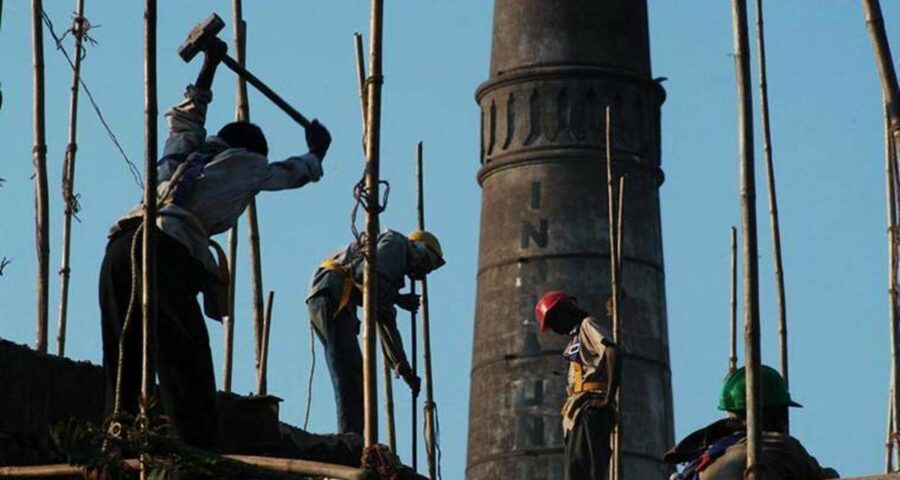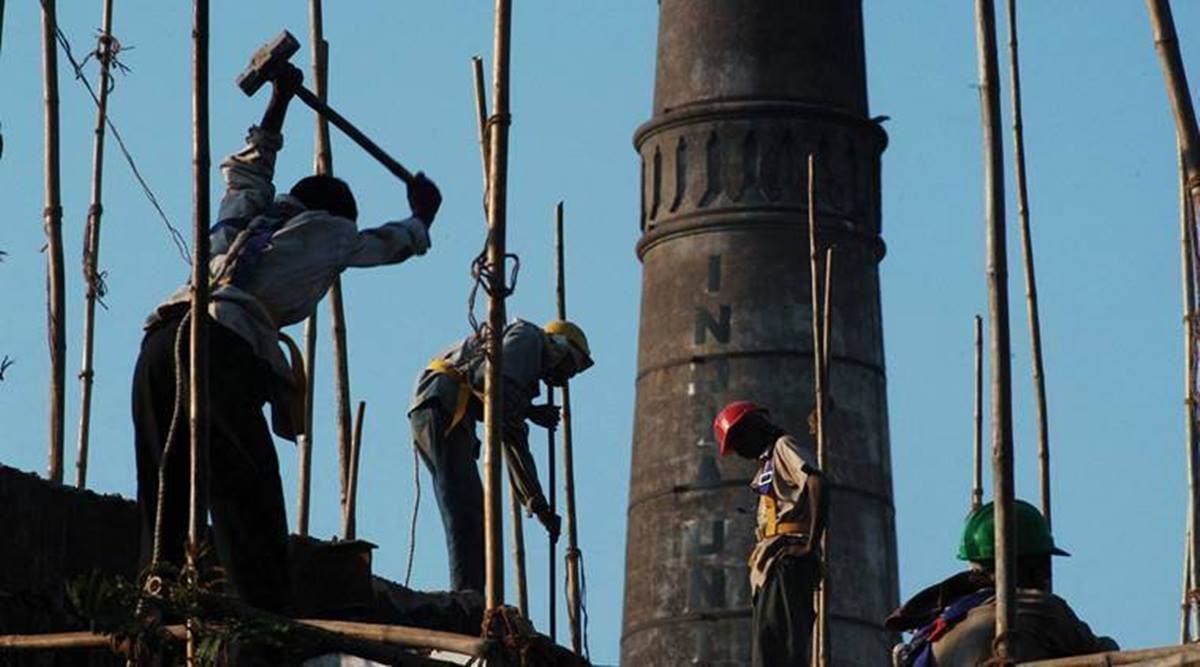Union Budget should remove the policy roadblocks such as import duties that stall manufacturing sector from integrating with global value chains.
Written by Ketan Reddy and Subash S
Prior to the lockdown, India was expected to become a $5 trillion economy by 2025. The 2019-2020 Economic Survey had projected a growth rate of 6-6.5 per cent for the fiscal year 2020-21. The onset of COVID-19 has upset all projections. The national income data released by the National Statistical Office (NSO) projects a 7.7 per cent contraction for FY2021. Even prior to the pandemic, there were significant pre-existing hurdles in India’s drive towards a $5 trillion economy. The stagnancy of the manufacturing sector which grew at a sluggish rate of 7 per cent in FY2019 and 2 per cent in FY2020 was a major roadblock.
In this backdrop, a key channel through which the manufacturing sector could be rejuvenated is by increasing the number of countries participating in global value chains (GVCs). Last year’s Economic Survey points out that GVC exports could contribute a quarter of the increase in value-added for the $5 trillion goal and generate four million jobs by 2025 and eight million by 2030 via the Make in India initiative.
The notion of increasing India’s integration with the global economy gained further momentum with the onset of the pandemic, which highlighted the risks associated with greater dependence of the globe on China. This opened up avenues for India to attract foreign investors looking to move production away from China. Yet, it was countries such as Vietnam and Bangladesh that benefited from the reorganisation of value chains. India seemed to have missed the bus.
At present, India’s infrastructure is not simply good enough to facilitate expansion of the manufacturing sector, let alone its integration into GVCs. The poor logistics setup encompassing the manufacturing sector results in delays, rising inventory costs, and often higher operating expenses. This severely cripples the efficiency of MSMEs, which form the bedrock of the Indian economy.
Infrastructure development is of the utmost importance when it comes to integrating into GVCs. China’s rapid rise in the GVC channel is also an outcome of its substantial investment in infrastructure development. Between 2001-06, China spent more money on its infrastructure than it did in the second half of the 20th century. The result of this continued investment is that China is not only the centre of the world production but it is also at a stage of becoming a “self-reliant China”.
Recently, India announced the Atmanirbhar Bharat campaign as a post-pandemic developmental model. The campaign aims at transforming India into a major player in the global economy, specifically, by enhancing the role of the manufacturing sector. However, the campaign has offered conflicting signals to foreign MNCs. For starters, in the previous year, India banned imports of various non-essential commodities. In October, a blanket ban was imposed on import of air conditioners with refrigerants. In the same period, a 10 per cent import duty on imported smartphones display and touch panels. Earlier in June, there were curbs on the imports of certain pneumatic tyres used in automobiles.
These import restrictions are touted as a strategy to boost domestic production by providing protection for domestic producers. But these policies go against the idea of transforming India into the manufacturing hub for the world and against the crux of GVCs. Firms integrated into GVCs produce a facet of the production chain. Imports and exports together facilitate the smooth operation of GVCs. According to the recent World Development Report, almost 80 per cent of global trade can be characterised as GVC related trade. Studies highlight that over 60 per cent of global trade is trade in intermediates (raw materials, parts, and components). As a result, banning imports on the outset may present itself as a policy aimed at protecting domestic firms, but in actuality, it would deter the participation of domestic firms in value chains and act as a deterrent for those MNCs on the lookout for a new production hub. Besides, restrictions on imports are not a recent phenomenon either. According to WTO, India’s applied tariff has increased from 13.5 per cent in 2014 to 17.6 per cent in 2019. These tariffs result in higher input prices, making domestic production using intermediate inputs more expensive and thus leading to less, not more, competitive exports. This problem is more prominent in a country like India, where discounting the automotive industry, the regional supply chains are not robust enough to produce inputs that could enable MNCs to maintain both export competitiveness and quality. This trade-off obstructs the integration of Indian firms into GVCs and inhibits foreign MNCs from moving their production base to India. Besides, protectionism would have an adverse impact on MNCs already operating from India, forcing them to look out for new production bases.
To achieve the vision of building a $5-trillion economy and transforming India into a next manufacturing hub, the government needs to have policies that attract more foreign investment into the country and remove stumbling blocks such as tariffs on imports of intermediates.
First, the government must provide the necessary infrastructural support and an open trade environment that enables the free flow of goods and services. Improvement in infrastructure is also important for the successful use of the performance-linked incentive (PLI) launched for sectors like pharmaceuticals, technology products, telecom and solar cells: PLI would be able to spur investment only when the supporting environment in terms of logistics and infrastructure is well developed. In this regard, the Rs 111 lakh crore investments in the National Infrastructure Pipeline (NIP) is a welcome step. Proper and timely implementation is important in reaping the gains from such investments. Further, the NIP consists of investment from the Centre (39 per cent), state governments (20 per cent) and private sector (21 per cent). Considering the financial stress being experienced all around, any shortfall in the contribution towards NIP should be taken care of by the Centre.
Second, policies need to address the rising tariffs on intermediate inputs that dents the export competitiveness of Indian firms. Third, it remains an anomaly that a labour abundant country like India is a key exporter of goods that are more capital and skill intensive. Automotive and the pharmaceutical sectors, the latter being pipped as the source for global production of COVID-19 vaccine, epitomises the capital and skill intensive nature of India’s export basket.
On the flip side, it points that India’s labour-intensive industries have not been able to establish its foothold in the global market. The Economic Survey had highlighted that the contribution of traditional unskilled labour-intensive industries (textiles, garments, footwear, etc.) in India’s merchandise exports declined from almost 31 per cent in 2000 to a little over 16 per cent in 2018. Therefore, it is important to formulate policies that lead to greater integration of traditional labour-intensive industries in the export landscape of the country. These sectors have to be in the ambit of the Make in India initiative so that jobs are created. The upcoming Union Budget should focus on changing the trajectory of Indian manufacturing.
Reddy and Subash are with the Department of Humanities and Social Sciences, Indian Institute of Technology Madras. Views are personal.
Source: Read Full Article


